Loading...
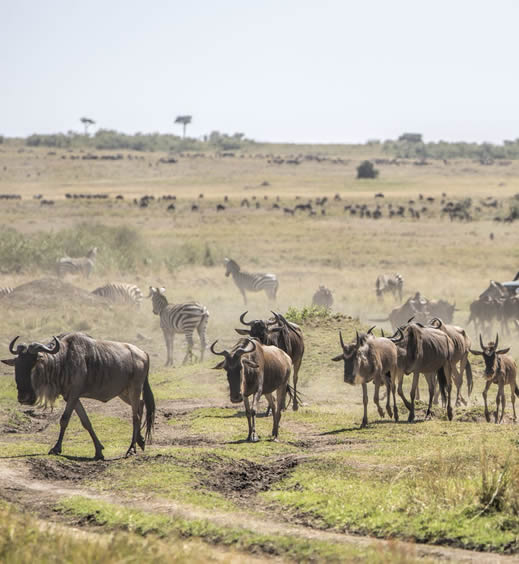
Masai Mara Game Reserve, located in southwest Kenya is a vast scenic expanse of gently rolling African savannah plains measuring 1510 square kilometers in area and bordering the Serengeti National Park in Tanzania to the south. Masai Mara is a unique wildlife conservation haven famous for its spectacular natural diversity of wildlife. It is a premier Kenya Safari location in East Africa, offering visitors numerous reasons to visit this animal paradise. Large numbers of Lions, Cheetah, Elephant, Rhino, African Buffalo, Wildebeest, Giraffe, Zebra,s and many more animals are found in the park in their natural habitat, unconfined and free to roam the vast wilderness stretching for miles on end.
It is no surprise that tourists from around the world travel here to experience a Masai Mara Safari tour, as the reserve has been voted one of the new Seven Wonders of the World. Regarding the origin of the name, the word 'Masai' comes from the Maasai tribe, nomadic inhabitants of the area and the word 'Mara' is their word for 'spotted', referring to the ubiquitous flat-topped acacia trees, shrubs and bushes that dot the landscape across most of the reserve.
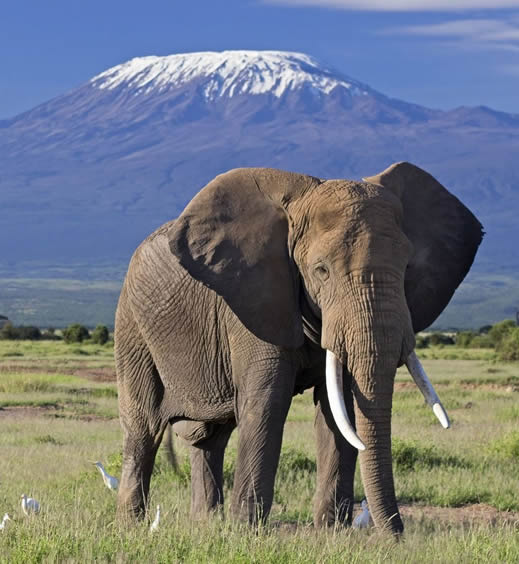
Amboseli National Park is located in Loitoktok District, Rift Valley Province of Kenya. Amboseli has an endless underground water supply filtered through thousands of feet of volcanic rock from Kilimanjaro’s ice cap, which funnels into two clear water springs in the heart of the park. However, the climatic pendulum can swing from drought to flood, and in the early 1990s, ceaseless rain changed Amboseli into a swamp. A few years later, the rains failed, and the grass-covered plains and turned to dust.
Amboseli is 39,206 hectares (392 km2; 151 sq. mi) in size at the core of an 8,000 square kilometers (3,100 sq. mi) ecosystem that spreads across the Kenya-Tanzania border is famous for being the best place in Africa to get close to free-ranging elephants among other wildlife species.
Other attractions of the park include opportunities to meet the Maasai people and offer spectacular views of Mount Kilimanjaro, the highest free-standing mountain in the world. In Amboseli’s case, there are big skies and far horizons combined with swampy springs and dry and dusty earth trampled by hundreds of animals.
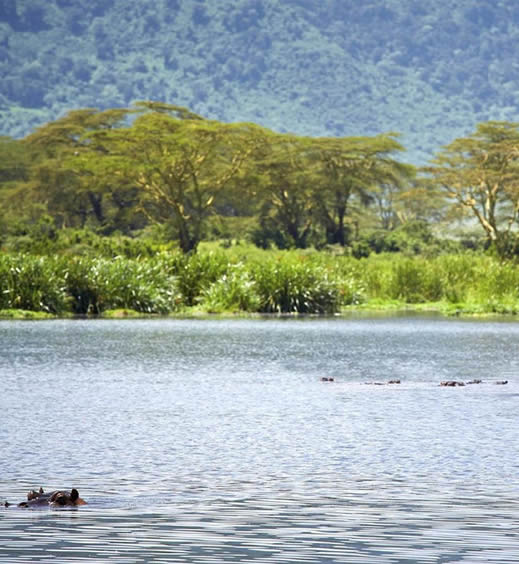
Located in Nakuru County, Lake Naivasha is a large freshwater lake that sits just outside the town of Naivasha. Situated at an elevation of 1,884m, Lake Naivasha is the highest lake within the Great Rift Valley. Lake Naivasha dominates the landscape, surrounded by a swamp that covers an area of around 64km². Beyond the swampland, the lake is encircled by forests of the fever tree.
The shores of Naivasha Lake is a great place to see various game, which Africa is known for, in a more peaceful and natural environment. Giraffes are often seen in the area among the acacia. Colobus monkeys usually roam the treetops. While buffalos hang out in swamps, a hippo group tends to sleep in the shallow waters. Birdlife is also rich at Naivasha Lake. Birds like ospreys, eagles, black crakes, and lily trotters choose to inhabit the lake area.
After exploring the main Lake Naivasha, and if you still have some time, consider visiting the other two smaller lakes, Sonachi and Oloidien. Sonachi, in particular, is quite a unique destination as it is a bright green lake that sits on a former volcano crater. Just beside the lake is the Hell’s Gate National Park. At Hell’s Gate, you will find huge red-hued cliffs that provide a backdrop for steam vents and bubble springs.

Aberdare national park is a remarkable Kenya safari destination and a great scenic destination found in central Kenya – East of the East African Rift Valley, the park covers an area of 776 square kilometers and forms part of the Aberdare Mountain from which the park gets its name.
In contrast to many national parks, the Aberdare National Park is covered by thick mountain rainforest and bamboo forests. Most of the park’s big game lives in these woodlands. The dense vegetation can sometimes make the sighting of animals a bit more difficult, but all the more exciting when an elephant or buffalo suddenly emerges from the thicket.
This park's animals include elephants, buffaloes, black rhinos, leopards, baboons, and other primates. Less common are lions and, in particular, the very shy bongo antelope, which lives in the dense bamboo forest. The big cats in the area are usually very dark, a unique feature compared to other regions in Kenya. Thus, you might even see a completely black leopard with some luck. Animals such as the large eland antelope and the small servile cat live in the higher moorlands. The Aberdare National Park is also a paradise for bird lovers as it is home to more than 250 bird species. Besides the rare Aberdare fan-tailed warbler, you can also find sparrows, eagles, and hawks.
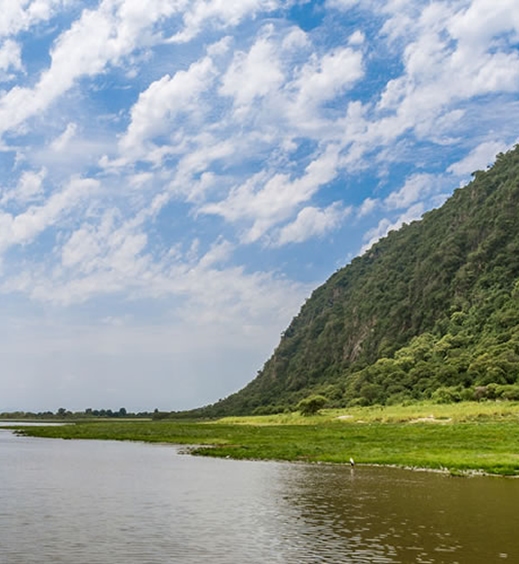
Lake Manyara National Park provides a unique wilderness experience. Including diverse landscapes such as the Rift Valley soda lake, open grasslands, dense woodlands, and stunning mountainsides. In the north of Tanzania, Lake Manyara National Park centers around its eponymous alkaline lake, a key habitat for hundreds of bird species. Between November and April, thousands of greater and lesser pink flamingos gather on its shores, along with pink-backed pelicans, yellow-billed storks, grey herons, and pods of hippos.
Surrounding the lake are marshlands, grassy plains, and acacia woodlands, home to tree-climbing lions and long-tusked elephants. Giraffe strut across the grasslands, where herds of buffalo, zebra, and wildebeest graze.
As well as enjoying game drives and walking safaris, you can visit the Maji Moto hot springs to soak in the warm, clear water under the shade of leafy trees. Lake Manyara is only 90 minutes from Arusha by car and easy to combine with a safari in the Serengeti, Tarangire, or the Ngorongoro Conservation Area.
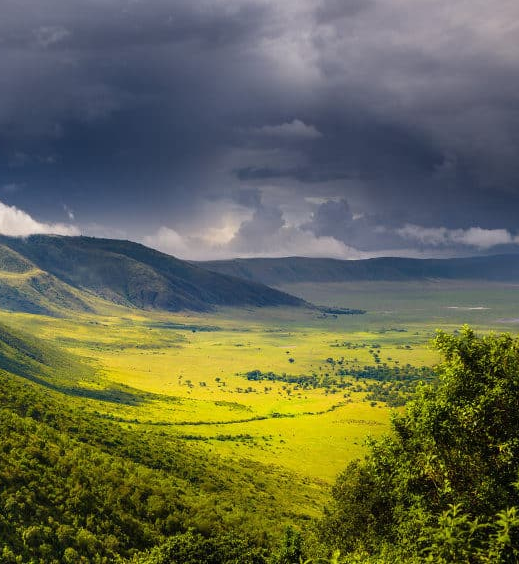
Sited in the Great East African Rift Valley in northern Tanzania, the Ngorongoro Conservation Area includes the wondrous Ngorongoro Crater, home to the densest concentration of wild animals in Africa. Within 260 sq. kilometers (100 sq. miles) of varied micro-climates, over 30,000 mammals, half of them rangy wildebeests and well-rounded zebras, together with their many predators, lordly lions, swift cheetahs, stealthy leopards, opportunist jackals, and skulking hyenas, with a vast cast of smaller mammals and birds, form a compelling destination for wildlife safaris in Tanzania.
The caldera of a two million-year-old collapsed volcano forms an unbroken, 2000 feet (600 meters) high rim around a natural amphitheater within which the high drama of predator and prey is enacted on a grand canvas. The Ngorongoro Conservation Area is also part of the Serengeti ecosystem but was separated from the Serengeti National Park in 1959, intending to enable the harmonious co-existence of man and his wildlife neighbors.

Tarangire National Park is in northern Tanzania, in the Manyara region south of Lake Manyara. It is a good choice if you are looking for more animals and fewer tourists while traveling. Tarangire is a stunning protected area that boosts huge herds of elephants, open plains, and some stunning Baobab trees. You can walk in Tarangire National Park. This is to be done with a ranger from the property you are staying at.
The park's name originates from the Tarangire River that crosses the park. The Tarangire River is the primary source of fresh water for wild animals in the Tarangire Ecosystem during the annual dry season. The Tarangire Ecosystem is defined by the long-distance migration of wildebeest and zebras. During the dry season, thousands of animals concentrate in Tarangire National Park from the surrounding wet-season dispersal and calving areas.
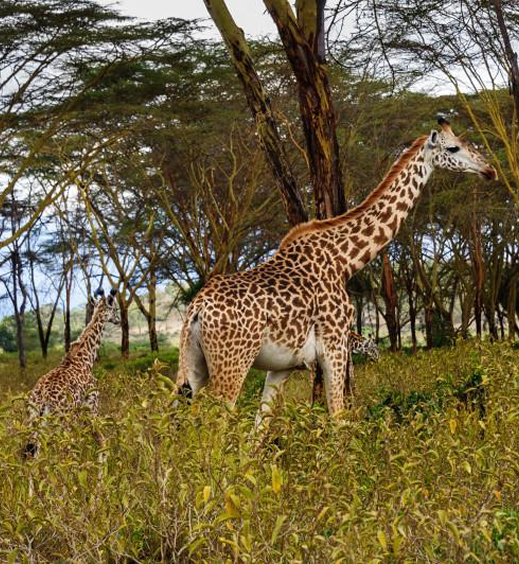
The Lake Nakuru National Park is one of the top tourist destinations in Africa, famed for the Flamingos, both lesser and greater, that flock to its shores to feed on the cyanobacteria that live in its alkaline waters. It is a very important breeding ground and stopover for many species of birds and has been designated a UNESCO World Heritage Site.
At some times of the year, there can be between one and two million flamingos forming a big pink band around the edge of the Lake. The Park is home to one of the greatest concentrations of Black Rhino in the World and also has a thriving population of White Rhino. It is also a sanctuary for the rare Rothschild Giraffe and one of the best places in Kenya to see Leopards.
Most visitors explore the park on guided game drives run by safari operators. It is one of the only parks in Kenya where you can drive up close to White Rhino and may even snap a shot of them with flocks of flamingos on the Lake in the background. Lake Nakuru is a must-see for any avid birder; not only will you witness the spectacle of up to two million Greater and Lesser Flamingos. Many other water birds call the lake home, notably pelicans, herons, and storks.